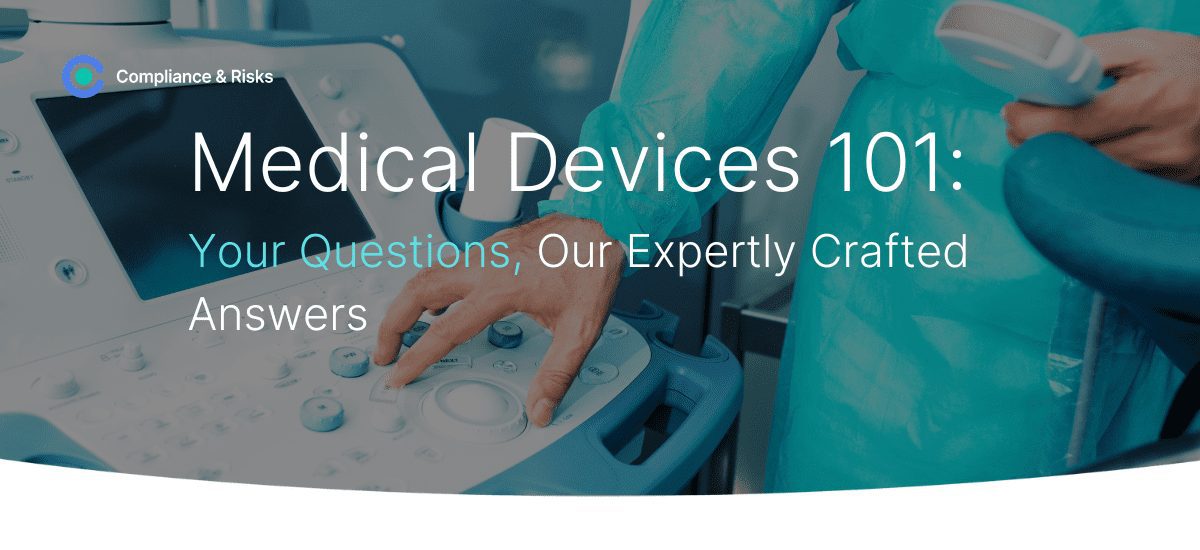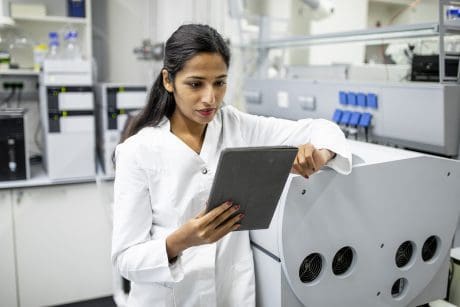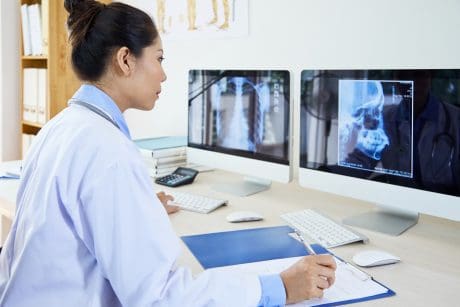
Medical Devices 101 | Your Questions | August 2024

Medical devices face a unique regulatory landscape that has been increasingly complicated by several factors in recent years.
The demand for more sustainable technology is being driven by both consumer demand and legislators, leading to regulatory implications. Global events such as Brexit and COVID-19 have also created unprecedented challenges.
As devices become increasingly integrated with artificial intelligence and an internet connection, new cybersecurity and data protection legislation is racing to keep up.
And on top of all this, the new regulatory framework for IVDR and proposed amendments for the registration, and inspection of medical devices under MDR means staying ahead is more critical than ever.
In our Medical Devices 101 series, we gather some of the most interesting recent inquiries from Compliance & Risks customers regarding medical device regulatory updates globally.
Question 1: For medical devices, is a label required for medical devices with one of the restricted substances present in the product for China RoHS 2?
Yes, one may apply the Green eLabel (EFUP mark) on products not containing restricted substances, but it would appear to be at the manufacturer’s discretion.
Question 2: For Albania: Rules and Obligations of Manufacturers and Importers Regarding the Registration and Reporting of Chemicals, Decision No. 449/2024, exceptions to reporting requirements are specified for certain categories of chemicals and quantities. Are medicinal products exempt from the reporting requirement?
Yes. Albania, as an EU candidate country, has been developing and aligning its chemicals management system with the EU regulatory framework for some time.
In this regard, this regulation in accordance with Section 4 paragraphs (2) and (4) of the country’s 2016 chemicals management Law largely modelled on EU REACH, exempts medicinal products alongside cosmetics, medical devices, veterinary products, foodstuffs, or animal feed, etc. from the registration and reporting requirements.
Question 3: With regard to the recent initiation of a public consultation in New Zealand regarding the amendment (addition of substances) to the HSNO Act under the Stockholm Convention, does the restriction on persistent organic pollutants (Section 25A) under the HSNO Act include “Articles like defining in EU REACH”, and regarding section 25B of the HSNO Act, are products already distributed domestically subject to regulation?
The HSNO Act does include “manufactured articles” containing one or more persistent organic pollutants (POPs) within its scope.
However, the Act does not explicitly define what constitutes a “manufactured article.” This lack of a specific definition can lead to ambiguity when comparing it to other regulatory frameworks, such as the EU REACH regulation. Taking into consideration this lack of clarity as to what is considered a “manufactured article” the NZ EPA proposes to adopt a more expansive and descriptive definition of what is an article. It suggests in a guidance document that an item is an article if it satisfies each of the four following criteria:
- “The item is deliberately formed to a specific shape or design during manufacture, and;
- The item has an end use function wholly or partly dependent on its shape or design, and;
- The item undergoes no change of chemical composition during end use, except as an intrinsic part of that end use, and;
- The item is not a particle or a fluid.”
Given that “manufactured articles” are covered under the definition of POPs as per Section 25A, imported articles containing POPs would also be subject to the storage requirement under Section 25B. This entails that any imported articles containing POPs would need to comply with the storage regulations set forth in Section 25B.
Furthermore, products already distributed domestically, including those shipped to small-scale facilities like retail stores, would also fall under these regulations. This would necessitate that all entities handling such articles ensure they are stored in compliance with the HSNO Act’s requirements to avoid any legal or environmental consequences.
Stay Compliant With Global Medical Device Regulations:
Catch up on our medical device updates with your coffee here:
- Stay Compliant: Medical Device Industry 2024 Regulatory Update
- Medical Devices Regulatory Updates in North, Central and South America
- Medical Device Regulation Checklist: Brazil
- Regulatory Trends in Medical Devices: A 12-18 Month Outlook
- Software As A Medical Device – Definition and Classification in the EU, USA, China, and Japan
- European Union (EU) In Vitro Diagnostic Regulation 2017/746 (IVDR) and Cybersecurity
Medical Devices 101: Have you got a Medical Device related query?
Many of the Medical Devices 101 questions were submitted and answers were conveyed by Compliance & Risks customers via the “Ask Our Experts” button in C2P.
Clients use AOE to ask about the latest proposed, enacted, and amended regulations and mandatory standards applicable to their products and geographies of interest.
When AOE questions can be answered in 30 minutes or less, Compliance & Risks’ subject matter experts answer them at no charge!
To learn more about C2P and how Compliance & Risks SMEs can help you with your questions, contact us today.
Meet our Experts

Global Regulatory Compliance Team
Our team of experts will elevate your strategic edge by addressing questions about laws and regulations. Fluent in almost 30 languages and backed by an extensive database of 90,000+ sources, our experts bring unparalleled knowledge to the table. Moreover, our expert team is dedicated to educating your organization, fostering better engagement, and ensuring your compliance and risk management strategies are second to none. With our team of seasoned professionals by your side, you’ll gain a competitive edge in navigating the complex landscape of compliance management, gaining deeper insights and valuable guidance.


